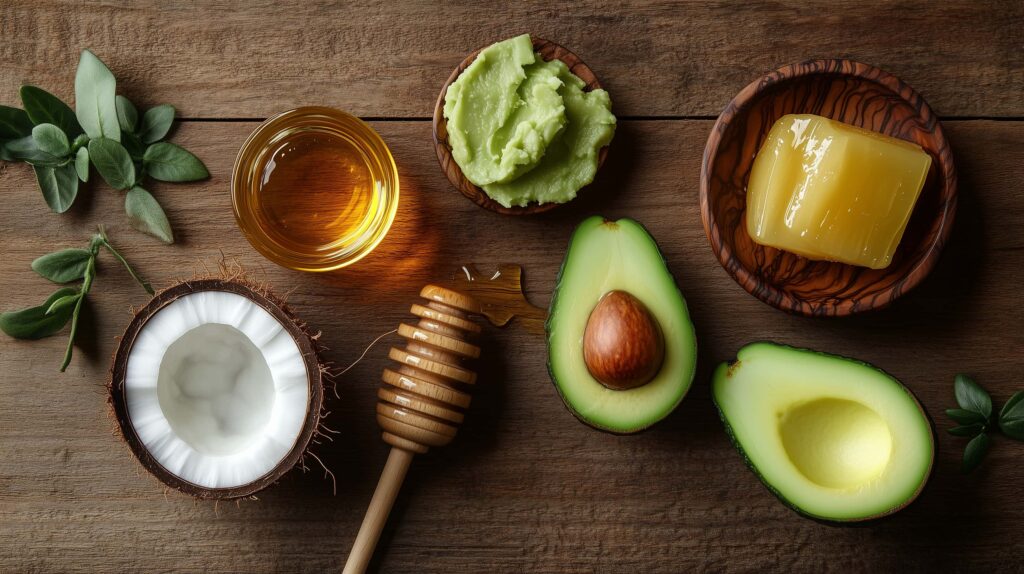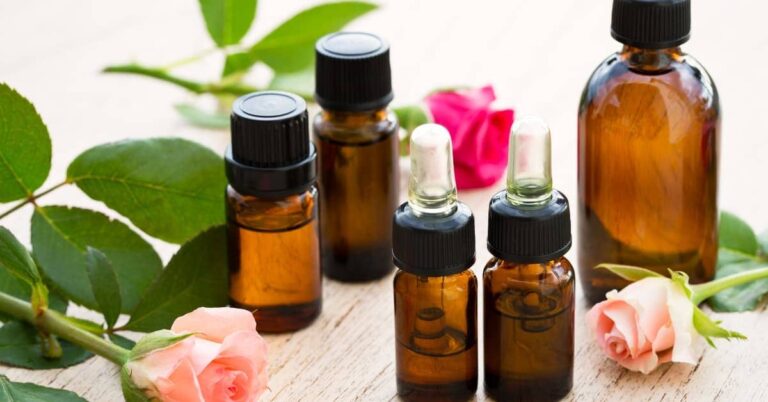Hair Masks for Colored vs. Natural Hair
Have you ever stood in front of the mirror, wondering if your hair mask is really working for you? Whether you’ve spent time perfecting your vibrant hair color or you’re embracing the natural texture of your untreated locks, choosing the right hair mask can make all the difference. In this article, we’ll dive into the secrets behind effective hair masks for colored hair versus natural hair. You’ll learn why your hair type matters, discover the best ingredients tailored to your needs, and get actionable, step-by-step advice—including easy DIY recipes—to transform your hair care routine. Let’s unlock the secrets together and help you achieve that healthy, radiant shine you deserve!
Understanding Your Hair Type

Before you invest in a hair mask, it’s essential to understand what makes your hair unique. In general, hair can be broadly categorized as either colored or natural, and each type has its distinct characteristics. If you’ve had your hair colored, you’re likely aware that chemical processes like dyeing or bleaching alter the hair’s structure. This can lead to increased porosity, where your hair absorbs and loses moisture more quickly. Colored hair may feel drier or more brittle because the cuticle, which acts as a protective layer, is often raised or damaged during the coloring process.
On the other hand, natural hair has not been exposed to such treatments. It tends to retain its natural oils better and maintains a more balanced moisture level. However, natural hair isn’t without its challenges. Depending on your genetic makeup, it might be prone to frizziness, dryness, or a lack of luster.
Understanding your hair type is the first step toward choosing the right mask. Ask yourself: Does my hair feel dry and fragile after coloring, or does it maintain its natural shine and texture? Recognizing these differences helps you choose a product that caters specifically to your hair’s needs, ensuring you get the maximum benefit from each treatment.
Common Hair Issues: Colored vs. Natural

Each hair type comes with its own set of challenges. If you have colored hair, one of your primary concerns is often color fading. Exposure to environmental elements, heat styling, and even washing too frequently can cause your vibrant hues to lose their intensity. Additionally, the chemical processes involved in coloring can leave your hair feeling dry and damaged, making it more susceptible to breakage and split ends.
In contrast, natural hair—while free from the chemicals of dyes—faces issues like frizz, lack of moisture, and an imbalanced scalp. Natural hair can sometimes struggle with hydration, leading to a dull appearance. Moreover, natural hair textures often require more nourishment to manage volume and tangles, especially in humid climates.
For both hair types, maintaining proper hydration and nourishment is crucial. Colored hair needs products that not only restore moisture but also protect the pigment. Natural hair benefits from masks that boost shine and manageability without weighing it down. By understanding these specific challenges, you can tailor your hair care routine to address the problems you face, whether it’s preserving color brilliance or enhancing natural shine.
Benefits of Using Hair Masks

Integrating hair masks into your routine can revolutionize your hair care regimen. Hair masks are designed to provide deep nourishment, moisture, and repair that everyday conditioners simply can’t match. For colored hair, the right mask not only hydrates but also creates a protective barrier that locks in color, preventing premature fading and damage. For natural hair, a good mask can smooth out frizz, enhance shine, and restore vitality to tired strands.
Here are a few key benefits you can expect:
Deep Moisturization: Replenishes lost moisture, essential for both colored and natural hair.
Repair and Strengthening: Helps mend damaged cuticles, reducing breakage and split ends.
Enhanced Shine: Revitalizes your hair, giving it a glossy, healthy appearance.Improved Manageability: Makes hair easier to detangle and style, reducing daily frustration.
By incorporating a hair mask into your routine once or twice a week, you can significantly improve the overall health and look of your hair. It’s a small step that brings big results, allowing you to enjoy both the aesthetic and functional benefits of well-nourished hair.
Best Hair Mask Ingredients for Colored Hair

When it comes to colored hair, protection and repair are paramount. Look for hair masks that include ingredients designed to restore moisture and prevent color fading. One of the top ingredients to consider is Argan Oil. Rich in antioxidants, vitamins, and essential fatty acids, argan oil helps to moisturize and protect hair from environmental damage while locking in color.
Another powerful ingredient is Keratin. This protein helps to rebuild the hair’s natural structure, reducing breakage and strengthening weakened strands caused by chemical treatments. Masks infused with keratin can restore a smooth texture and add resilience to your hair.
For added protection, consider masks that include Antioxidants like vitamin E. Antioxidants neutralize free radicals that can cause further damage to colored hair, ensuring that your vibrant hues remain intact for longer periods. Silicones may also be beneficial when used in moderation; they form a protective layer over the hair shaft, reducing moisture loss and giving your hair a polished look.
Finally, ingredients like Coconut Oil and Shea Butter are excellent for deep hydration without stripping the hair of its natural shine. They help maintain a delicate balance between moisture and protection, ensuring that your colored hair remains soft, manageable, and brilliant.
When shopping for a hair mask, read labels carefully and choose products that combine these beneficial ingredients. This targeted approach will help you safeguard your color while repairing and nourishing your hair from the inside out.
Best Hair Mask Ingredients for Natural Hair

Natural hair thrives on nourishment and moisture, and the right ingredients can make a world of difference. One of the top components for natural hair masks is **Coconut Oil**. This versatile oil penetrates the hair shaft deeply, providing long-lasting hydration and reducing protein loss, which in turn minimizes breakage.
Another must-have ingredient is Shea Butter. Known for its rich, emollient properties, shea butter helps to lock in moisture and tame frizz. It smooths the hair cuticle, enhancing shine and making your natural locks more manageable.
Aloe Vera is also highly effective; its soothing properties help to calm the scalp and provide a cooling sensation, while its vitamins and enzymes promote healthier hair growth.
For those battling dryness and dullness, Honey can be a game-changer. This natural humectant attracts moisture and locks it into your hair, giving it a soft, lustrous finish.
Additionally, Avocado Oil is packed with essential fatty acids and vitamins that nourish and strengthen your hair, making it less prone to damage.
When selecting a hair mask for natural hair, look for formulations that avoid harsh chemicals and synthetic fragrances. Instead, opt for products that emphasize natural, plant-based ingredients. These ingredients not only nourish your hair but also work in harmony with its natural structure, preserving its unique texture and shine.
By focusing on these powerful natural ingredients, you can create a hair care routine that enhances the innate beauty of your untreated hair, ensuring it remains vibrant, healthy, and full of life.
How to Choose the Right Hair Mask for You

Choosing the perfect hair mask doesn’t have to be overwhelming. Start by identifying your primary hair concerns. Are you dealing with color fading and damage from chemical treatments, or is your natural hair lacking moisture and shine? Knowing your needs is the first step.
Next, examine the ingredient list. For colored hair, prioritize masks with antioxidants, keratin, and oils that lock in color. For natural hair, look for hydrating ingredients like coconut oil, shea butter, and aloe vera. It’s also important to consider your hair’s porosity. If your hair is highly porous—often the case with colored or chemically treated hair—it may benefit from heavier, more emollient masks. If your hair is less porous, a lighter formulation may be more suitable.
Reading reviews and product labels can provide additional insights. Look for products that specifically mention benefits relevant to your hair type. If possible, consult with a hair care professional who understands your unique needs.
Remember, the goal is to match the mask’s benefits to your hair’s specific challenges. By taking a personalized approach, you can ensure that every treatment you apply brings you one step closer to the healthy, beautiful hair you desire.
DIY Hair Mask Recipes

If you enjoy taking a hands-on approach to your beauty routine, why not try making your own hair masks at home? Here are two simple recipes tailored to colored and natural hair:
Recipe for Colored Hair
Ingredients:
– 2 tablespoons of argan oil
– 1 tablespoon of coconut oil
– 1 egg (for protein)
– 1 teaspoon of honey
Instructions:
1. In a small bowl, whisk the egg until frothy.
2. Mix in the argan oil and coconut oil until well combined.
3. Add the honey and stir until the mixture is smooth.
4. Apply evenly to damp hair, focusing on the mid-lengths and ends.
5. Cover your hair with a shower cap and leave on for 30 minutes.
6. Rinse thoroughly with lukewarm water and follow with a mild conditioner.
This mask nourishes, strengthens, and helps lock in color, leaving your hair vibrant and silky.
Recipe for Natural Hair
Ingredients:
– 2 tablespoons of coconut oil
– 1 tablespoon of shea butter
– 2 tablespoons of aloe vera gel
– 1 teaspoon of avocado oil
Instructions:
1. Melt the shea butter gently in a microwave or double boiler until it reaches a liquid state.
2. Mix in the coconut oil and avocado oil.
3. Stir in the aloe vera gel until you have a smooth, uniform mixture.
4. Apply the mask evenly to your hair, concentrating on dry areas and ends.
5. Cover your hair with a warm towel or shower cap, and let it sit for 30-45 minutes.
6. Rinse thoroughly and style as usual.
These DIY recipes provide a natural boost tailored to your specific hair type, offering nourishment without the additives found in some commercial products.
Expert Tips for Applying Hair Masks

To get the most out of your hair mask, proper application is key. First, start with clean, damp hair. Shampoo your hair gently to remove buildup, then towel-dry so it’s not dripping wet. This ensures that your hair can absorb the mask’s nourishing ingredients more effectively.
Next, section your hair into manageable parts. This makes it easier to apply the mask evenly from roots to tips. Use your fingers or a wide-tooth comb to work the product through your strands, focusing especially on areas that are more damaged or dry.
For an added boost, consider massaging your scalp for a few minutes. This not only stimulates blood flow but also helps the mask penetrate deeper into your hair follicles. Once applied, cover your hair with a shower cap or wrap it in a warm towel. The added heat opens up the hair cuticle, allowing for better absorption of the ingredients.
Finally, follow the recommended duration on the product instructions. Overdoing it might lead to product buildup, while under-treating won’t yield the full benefits. Rinse thoroughly with lukewarm water and finish with a light conditioner if needed. These expert tips will help you maximize the benefits of your hair mask, leaving your hair feeling truly revitalized.
Frequently Asked Questions (FAQs)
Q: How often should I use a hair mask?
A: Generally, using a hair mask once or twice a week is sufficient. However, if your hair is severely damaged or very dry, you might benefit from an extra treatment.
Q: Can I mix store-bought masks with DIY ingredients?
A: While it’s best to follow one formula at a time, you can sometimes boost a commercial mask with a few drops of natural oil, like argan or coconut oil.
Q: How long should I leave the mask on?
A: Typically, 30 to 45 minutes is ideal. Always refer to the product instructions for best results.
Q: Can these masks help with scalp issues?
A: Yes, many of the natural ingredients also soothe the scalp and promote overall hair health. If you experience persistent scalp problems, consult a professional.
Wrapping Up
Now that you’re armed with the secrets to choosing and applying the right hair mask for colored and natural hair, it’s time to put these tips into action. Whether you opt for a store-bought solution packed with potent ingredients or decide to try out one of our DIY recipes, remember that consistency is key. Your hair deserves the best care, and with a tailored approach, you can enhance its natural beauty and strength.
We’d love to hear your success stories and any tips you’ve discovered along the way. Drop a comment below or share your experiences on social media. Don’t forget to subscribe for more expert advice and natural beauty solutions. Embrace the journey to healthier, more radiant hair—starting today!







